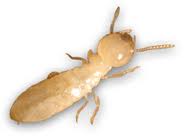The Importance of Regular Termite Inspections: Why Greenville Homeowners Can’t Afford to Skip This Crucial Step
In the charming city of Greenville, North Carolina, homeowners pride themselves on maintaining beautiful homes. However, there’s an unseen threat that could undermine the integrity of these homes: termites. This blog post will delve into the crucial importance of annual termite inspections and provide practical termite tips to keep your home safe and sound.
The Hidden World of Termites: Understanding the Enemy
The Biology of Termites
Termites, often mistaken for ants, are far more destructive. These eusocial insects live in colonies that can number in the thousands. They primarily feed on cellulose, a component found in wood, making our homes a perfect target for their insatiable appetites.
Eastern Subterranean Termites
Common in Greenville, subterranean termites build their colonies underground. They create mud tubes to travel to food sources above ground, often going undetected until significant damage has occurred.
Drywood Termites
Unlike their subterranean cousins, drywood termites live within the wood they consume. This behavior makes them harder to detect, as there are no mud tubes, and evidence of their presence is often hidden within the structure of the wood.
Termite Behavior and Damage
Termites work silently and often unnoticed, causing structural damage over time. They can weaken the wooden structures of a home, leading to costly repairs. It’s crucial for homeowners, especially in areas like Greenville, North Carolina, to understand the signs of termite activity, such as hollow-sounding wood, visible mud tubes, and discarded wings.
Termite Tips for Greenville Homeowners
Prevention is Key
Moisture Control
Termites thrive in moist environments. Ensure your home is well-ventilated and fix leaks promptly. Keep gutters clean to prevent water accumulation near your home’s foundation.
Wood-to-Ground Contact
Avoid wood-to-ground contact around your home. Store firewood and lumber away from the house and ensure that wooden parts of the structure are not directly touching the soil.
Regular Termite Inspections
Annual Termite Inspection
An annual termite inspection is a must for every homeowner in Greenville. Professionals can spot signs of termite activity early on, preventing extensive damage. During these inspections, experts look for signs of both active and previous infestations and assess the risk factors unique to your property.
How D & D Pest Control Co. Can Safeguard Your Home
At D & D Pest Control Co., we understand the distress and financial strain termites can cause. Our team of experienced professionals is equipped with the latest tools and knowledge to detect and eliminate termites effectively.
Our Approach
We conduct thorough inspections, identifying potential entry points and signs of infestation. Based on our findings, we develop a customized treatment plan that best suits your home’s needs, ensuring long-term protection against these destructive pests.
Post-Treatment Care
After treatment, we provide guidance on how to prevent future infestations and offer follow-up inspections to ensure your home remains termite-free.
Regular termite inspections are an essential aspect of home maintenance, especially in areas like Greenville, North Carolina. By understanding the biology of these pests and taking proactive measures, homeowners can protect their properties from significant damage. If you suspect a termite infestation, don’t hesitate to reach out to D & D Pest Control Co. for a thorough inspection and effective solutions. Share your thoughts and experiences with termite control in the comments below, and let’s keep our homes safe and sound together!
